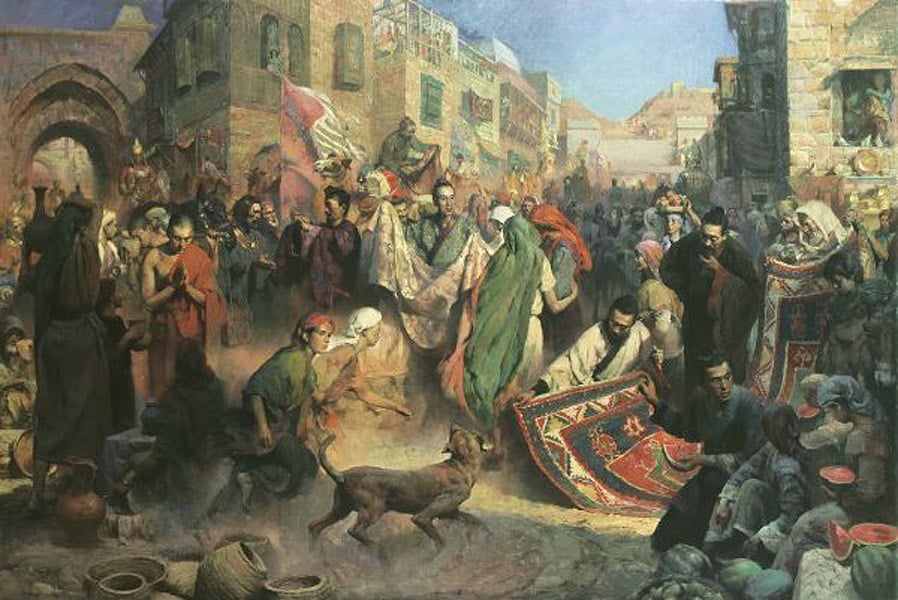Diffusion refers to how something is widely distributed or spread across. A drop of ink, for example will spread through a glass of water until the ink and water blend into a single mixture. Plants, animals, things and ideas are all capable of diffusing in new regions or cultures. A person needs more of the products, and merchants compete to provide it. Other people will try to produce the goods locally to meet the rising needs.
The spread of new products sometimes occurs during exchange of products between different cultures. Travelers and merchants bring the new products back to their home place. Use of these new products quickly spreads and increases trade. There are two ways that culture can be diffused: relocation diffusion and expansion diffusion. Relocation diffusion is the spread of a trait or idea through migration of people by taking their cultures with them from one place to another. An example for this kind of diffusion is when people from another country go to America to study. The foreign student will spread their traits, ideas, habits and products in America and vice versa.
Alternatively, expansion diffusion is the spread of a trait or idea from one place to another without people moving with it themselves. Technology is a good example for this, as it helps with the diffusion.
Another well-known example is – Trade Along The Silk Road. Middle Eastern and Roman merchants established overland trade with ancient China along the Silk Road. Through  Culture Diffusion Chinese silk was introduced to European market. Romans never saw a material as fine and smooth as Chinese silk. Previously, Romans had only worn wool, linen or cotton. This shows the impact of silk from China to the Romans. Silk quickly became a symbol of wealth and high status in the Roman society. The Silk Road also saw the exchange of chariots, language, and metallurgy. In particular, the Chinese traded silks for horses and camels for use by their armies to prevent foreign invasions.
Culture Diffusion Chinese silk was introduced to European market. Romans never saw a material as fine and smooth as Chinese silk. Previously, Romans had only worn wool, linen or cotton. This shows the impact of silk from China to the Romans. Silk quickly became a symbol of wealth and high status in the Roman society. The Silk Road also saw the exchange of chariots, language, and metallurgy. In particular, the Chinese traded silks for horses and camels for use by their armies to prevent foreign invasions.
Today, the use of technology helps in easily spreading new products in the world market. People learn of new products through travel, newspapers, and television and telephone conversations. For example, personal computers did not exist before the 1980s. They were developed in the United States, but they quickly spread throughout the world.
Even more recently, scientists and engineers developed mobile phones. These have spread rapidly even to less developed areas, which lack enough telephone cables for landline telephones. In just few years, mobile phones have spread from America, Japan, and Europe to every region of the world.
